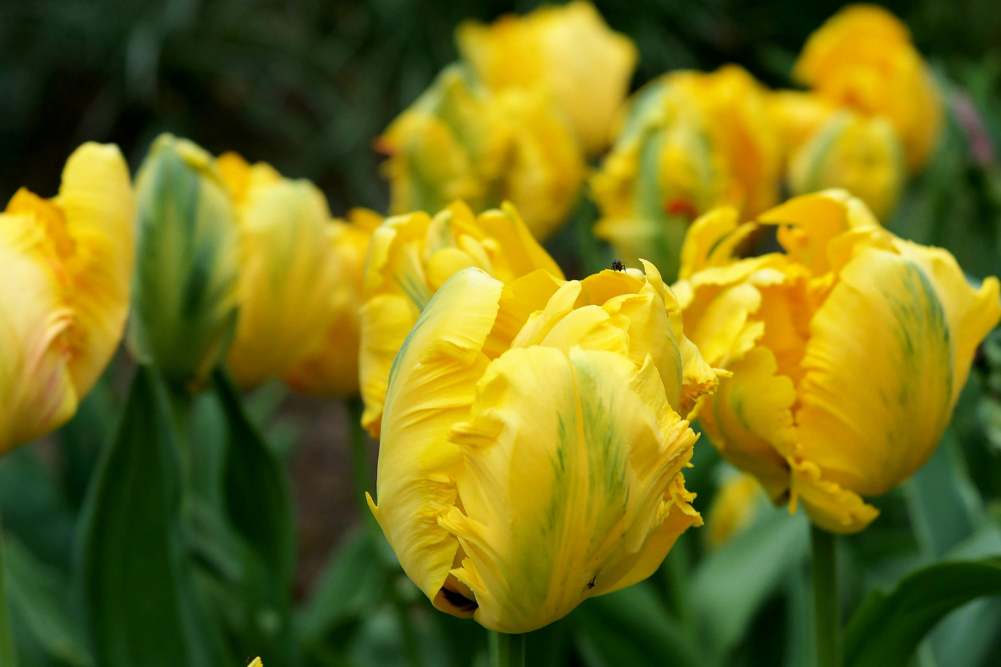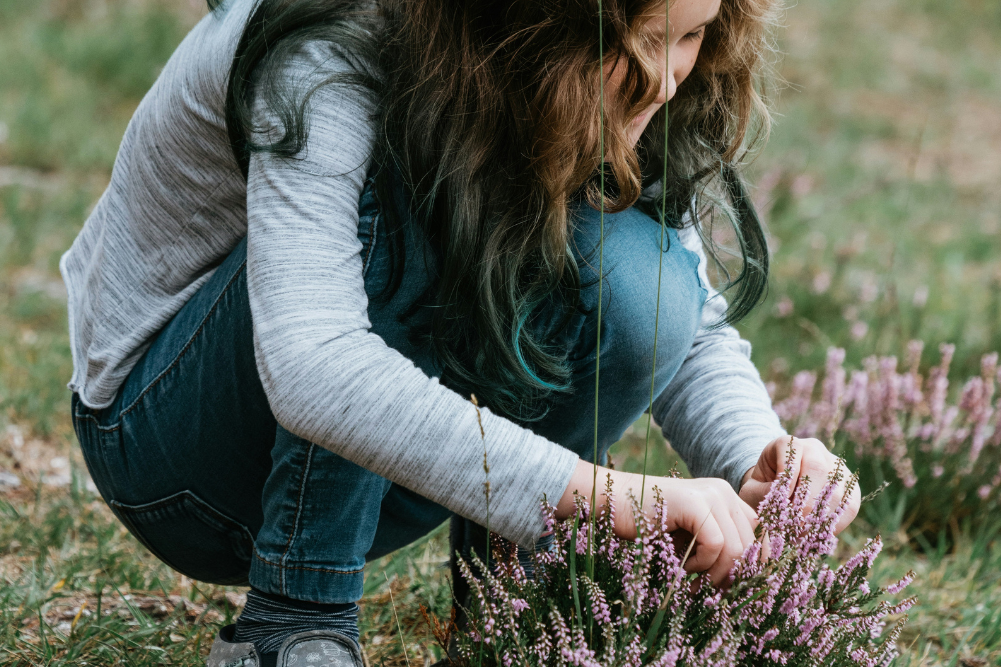How to grow your own veggie patch
Interested in growing your own fruit, vegetables or herbs but don’t have enough space to grow crops of any kind? Don’t lose heart. With a little knowhow and the right equipment you can create your own miniature version on your balcony or in a courtyard. More than ever before, Australians are embracing the grow-your-own trend. Research by Nursery & Garden Industry Australia found that 83 per cent of people find the idea of growing their own produce appealing and about 63 per cent have an edible garden, an increase of 3 per cent over the previous 12 months.
The desire for tastier and healthier produce, free from chemicals and additives, is one reason. Adopting a greener lifestyle is another. Sustainability is no longer the buzzword of the new millennium; it’s part of the way we live. With increasing demands on fossil fuels and depleting natural resources, finding ways to reduce our carbon footprint is vital.
Next time you tuck into a fresh, crunchy salad, think for a moment about its real cost in energy. There’s the fuel needed to grow it, powered electricity systems to water it, machinery to harvest it, transportation to the supermarket, herbicides, pesticides and more. With the global credit crisis, families are also looking for ways to stretch their dollar further and growing your own can save money.
Less disposable income for many families and shrinking family sizes also mean many Australians are downsizing their homes to live in apartments and townhouses. You can create a healthy edible garden in even the smallest of spaces. And if you lead a transient lifestyle, balcony gardens are ideal. When you’re on the move, you can simply take your vegetable garden with you.
If you’re a city dweller, the earthy aroma of growing fresh produce can transport you to a greener place. Seeing the first seedlings flourish under your care and watching and nurturing your fruits and vegetables are deeply rewarding and good for the soul.
Children can also enjoy getting involved in the garden. Watching things grow and harvesting their edible bounty will prompt them to eat more fresh fruits and vegetables and perhaps to try things they hadn’t before. To encourage children to be involved in your new green venture, it’s a good idea at first to plant vegetables that grow quickly. They’ll see the fruits of their labour from pot to plate and be ready to embrace the potted garden with gusto.
If you are new to gardening, you might also like to opt for planting seedlings at first. You’ll discover what works best for you and you’ll see results much faster. When you decide you are ready to plant seeds, you can use recycled butter containers to plant them in before they go into your pots.
A bountiful harvest
If you’ve never thought about a courtyard or balcony vegetable patch, you might be surprised at just what you can grow in containers. Seed companies are now producing smaller versions of some vegetables, such as zucchini and cucumber, so they can grow in container gardens, says landscape gardener Sophie Honein from Edible Plantscapes. “Other vegetables, such as spinach, rocket, button squash, beetroot, lettuce, cherry tomatoes and chillies, will thrive in pots,†she says. These are all easy to grow and require minimal maintenance.
For the more adventurous, try raspberries, broccoli and cauliflower, artichoke and capsicum, suggests Sophie. These will also do well, but do require a little more tender loving care.
Culinary herbs
Like to add a dash of panache to your cooking? Add a pinch of fresh herbs to your favourite dishes and experiment with new ones, with herbs picked from your own home garden. You can include chives, lemongrass, sage, lemon thyme, Thai mint, coriander, oregano, parsley and lemon balm.
To successfully grow most herbs, you need sun, sun and more sun, says Anthony Kachenko, Environmental and Technical Policy Manager from Nursery & Garden Industry Australia. “They thrive in well-drained soils and make ideal container (pot) plants. Make sure you use a premium-grade potting mix before planting and be mindful of the size of the pot — you want to allow adequate room for the roots to grow,†he says. “Depending on the pot, you may also like to seal the inside to prevent moisture from leaching,†he says.
To give your herbs room to grow, you can divide the plants in halves or quarters. When digging a hole for your herbs, Anthony recommends making it around twice the width of your pot. “After you plant your herbs in a pot, they’ll need to be watered in with a seaweed solution and then apply a slow-release fertiliser to give them an added boost.
“Apply a layer of mulch to keep the water in and the weeds out — just make sure you keep it away from the base of the herbs so they don’t rot,†he says.
Mini fruit trees
They say good things come in small sizes and fruit trees are no exception. Imagine plucking plump, juicy citrus off the tree on your orchard balcony! The new-generation miniature fruit trees are both decorative and functional. There are dwarf lemons, nectarines, peaches, mangoes, pears, Australian finger limes, mulberries and more. There are even dwarf fruit cocktail varieties that produce four different fruits on the one tree — apricot, peach, nectarine and plum. They produce normal-size fruit — only the trees are smaller, so they can be grown in pots and small backyards.
Get vertical
Create a stylish and functional outdoor garden on your balcony by constructing a green wall. Green walls offer many benefits, according to Jock Gammon, Director of Green Rooms Gardens & Landscapes. They purify and oxygenate the air, save you space and can increase your self sufficiency.
Position the trellis in a corner of a balcony behind pots and grow sugar snap peas, beans, passion fruit, chokoes and tomatoes to create an instant living green wall. You can also train trees using careful pruning techniques to grow against a solid wall or to form a uniform flat shape. The technique is called espaliering.
“It appears as if the plants are growing on a vertical plane, up the wall,†says Sophie. You can either purchase plants already espaliered or learn the technique. “Lemons, mandarins, oranges and limes work well as espaliered plants; and, not only do they form an attractive, colourful backdrop, but as an added bonus they give you instant privacy,†she says.
Go potty
Can’t decide on what sort of pot to use? You are limited only by your imagination, according to Jock. “You can use virtually any type of container, bucket or vessel, as long as you add drainage holes,†he says. These days, pots come in many shapes and sizes. Terracotta pots have an earthy feel and they look great, but they do dry out quickly, says Jock. Plastic pots that look like terracotta are a viable alternative. You can also choose biodegradable pots — these will break down in three years.
To add a multi-layered effect and give you a little more space, you can use hanging baskets, suggests Jock. “Simply line them with bark or moss and top up with potting mix. Due to their exposure to the wind, hanging baskets with vegetables will need to be watered often,†he says.
Another option is styrofoam boxes. These are a great way to grow your own vegetables, says Sophie. “Ensure they have holes in the bottom, otherwise the plant roots will eventually rot.â€
Some vegetables, such as tomato, capsicum and citrus, require deeper pots of around 30cm and lettuce and herbs can grow well in smaller containers. Pots for citrus plants need to be wide to allow room for their root systems. And you will also need to repot them every couple of years, so choose pots that have straight sides to make replanting easier.
Create a garden room
If space is limited at your place, connect the interior of your home with the exterior by using bifold or sliding doors. These allow for a seamless transition to your green garden balcony room filled with your healthy harvest. If you want to create a stylish, functional garden room, you can also consider matching the colour palette of your pots with your home’s interior, says Jock. “You can make a bold statement with red pots, while white is neutral and contemporary browns and charcoals are also popular,†he says.
If you have a small balcony, rethink your seating options. Source bench seats with storage space underneath to house all your gardening tools.
Soils
Most vegetables need rich, well-drained, aerated soil. For your plants to thrive, you need to create the right conditions and that means the right soil mix. Premium organic potting mix is the best option for container gardens, says Jock. “There’s no point in buying the cheaper stuff because you just won’t get anywhere near the same result,†he says.
If you were planting your crops in the ground, it’s generally advised to rotate them regularly so the soil within the beds isn’t depleted of micronutrients. When using potting mix, you don’t need to rotate pots, but you do need to ensure that you fertilise your plants with good manure. The Nursery & Garden Industry Association recommends fertilising your pot garden every two to three weeks with a soluble fertiliser to give your pots an added boost.
Water
Plants in pots will dry out at a faster rate than those in the ground, so they do need frequent watering. You’ll need to top them up with water about every two days as a general guide. But some things only need to be watered once a week — check the directions on the seed packet or punnet. Not sure if your plants need a drink? Just pop your finger into the potting mix in the plant and, if your finger comes out dry, they need watering; if it comes out with soil on it, they don’t need water, says Sophie.
You can help to prevent loss of moisture through mulching around the top of the pots — sugar cane is the best option.
Go for quantity
If you don’t have much room, choose plants that will provide you with a high yield. If you opt for dwarf varieties, you’ll get even more produce. Dwarf and baby varieties of vegetables such as tomatoes, cucumber, squash, and chilli will flourish in pots.
Position, position, position
When positioning your potted vegetable garden, always consider the best aspect to give the ideal growing conditions. Plants in pots on the ground might be shaded by balustrades, so will need to be elevated to ensure they receive sufficient sunlight, says Jock. “High winds can also affect growing conditions, so if your garden is in a high wind area, position your plants so more delicate varieties are sheltered by others,†he says.
Your potted garden will need a minimum of six hours of full sunlight each day and vegetables such as tomatoes, cucumbers and strawberries need even more. Others don’t need as much sun. Spinach will wilt and lettuce can become stressed and go to seed if it gets too much sun, says Jock. “Try staggering your pots so some offer dappled shade to others,†he suggests. For sun-loving crops, an elevated position will increase the amount of sunlight your plants receive.
If your balcony garden is shady, you might think that growing your own vegies won’t be possible. The good news is some vegetables love the shade. Try planting curly and flat-leaf parsley, coriander, chives, mint, baby spinach, some rocket, mizuna (a Japanese mustard-flavoured green), Vietnamese mint, lemon balm and lemongrass.
Organic pest control
To thwart any garden pests (yes snails do climb high-rise walls), there are some simple measures you can take. To rid your vegetable patch of snails, cut open the top of a beer can and leave it half-filled with beer. Place the can on the floor next to the pot (or inside the pot if it’s a large one). The snails will happily drink the beer and die.
White fly is another pest that loves broccoli, spinach, cauliflower and tomatoes. As a natural deterrent, try planting sweet basil and yellow marigolds around the pots, suggests Sophie. As a bonus, you can eat the basil and the marigold flowers — they’re delicious in a salad.
Caterpillars are a big garden pest and vigilance is the key in dealing with these little grubs. The best way to rid your garden of them naturally is to remove them from plants and squash them.
Veggie patch tips.
Artichoke A perennial plant that requires up to 1.5m wxh for adequate growth. Full sun.
Baby spinach Autumn/winter. Full sun to part shade. Moist, well-drained soil.
Beans Autumn/spring. Full sun. Will need some trellising to support vigorous growth. Best grown by direct sowing of seeds. Plant after frost has passed.
Broccoli Autumn/winter. Full sun. Moist, well-drained soil.
Button squash Spring/summer. Full sun in well-drained soils. Will spread, so requires large area to grow.
Capsicum Spring/summer. Full sun. Keep moist but not overwatered.
Carrot Autumn/winter. Full sun. Deep, well-drained friable soil.
Cauliflower Autumn/winter. Full sun. Deep, well-drained friable soil.
Cherry tomatoes Spring/summer. Keep well-watered and well-fed.
Chilli Spring/summer. Full sun. Keep moist but not overwatered.
Baby cucumber Spring/summer. Full sun. Will spread so requires a large area to grow. Keep well-watered during extreme heat.
Lettuce Autumn/winter. Full sun. Will spread so requires a large area to grow. Keep well-watered during extreme heat.
Mizuna Autumn/winter. Full sun.
Snow peas Autumn/winter. Full sun. Well-drained soil. Will need some trellising to support rampant growth.
Raspberries Perennial. Prefers cool climates in well-drained soils. Full sun. This shrub will grow up to 2m wxh.
Rocket Winter. Full sun to part shade. Moist, well-drained soil.
Shallots Autumn/winter. Full sun in well-drained soil.
Spinach Autumn. Full sun to part shade. Moist well-drained soil.
Spring onion All year. Full sun.
Strawberries Summer/autumn. Full sun and plenty of moisture. Grows well in hanging baskets.
Sugar snap peas Autumn/winter. Full sun. Well-drained soil. Will need some trellising to support rampant growth.
Tomatoes Spring/summer. Keep well-watered and well-fed. Taller varieties will need staking
Zucchini Spring/summer. Plant in full sun. Keep moist.
* Planting Guide courtesy of Nursery & Garden Industry Australia, (NGIA) the peak industry body for the Australian nursery and garden industry.







